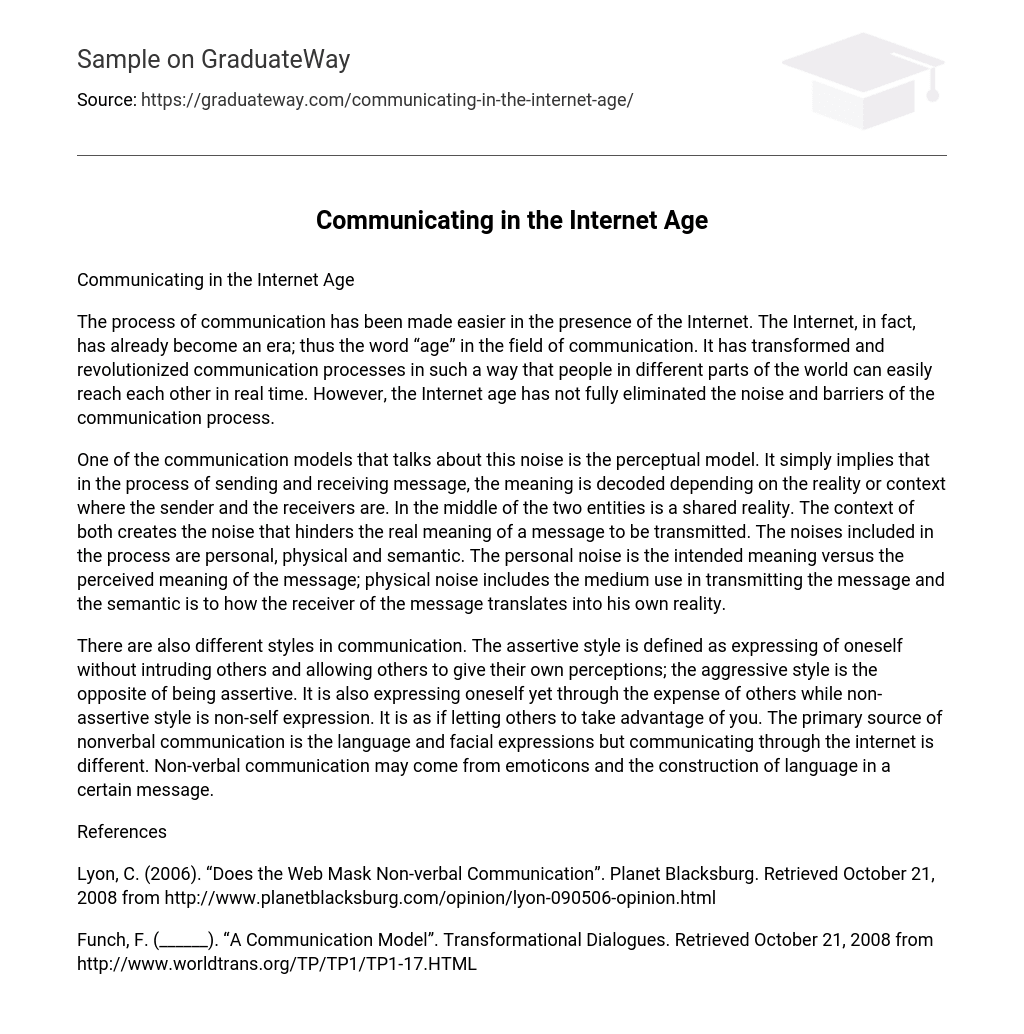The process of communication has been made easier in the presence of the Internet. The Internet, in fact, has already become an era; thus the word “age” in the field of communication. It has transformed and revolutionized communication processes in such a way that people in different parts of the world can easily reach each other in real time. However, the Internet age has not fully eliminated the noise and barriers of the communication process.
One of the communication models that talks about this noise is the perceptual model. It simply implies that in the process of sending and receiving message, the meaning is decoded depending on the reality or context where the sender and the receivers are. In the middle of the two entities is a shared reality. The context of both creates the noise that hinders the real meaning of a message to be transmitted. The noises included in the process are personal, physical and semantic. The personal noise is the intended meaning versus the perceived meaning of the message; physical noise includes the medium use in transmitting the message and the semantic is to how the receiver of the message translates into his own reality.
There are also different styles in communication. The assertive style is defined as expressing of oneself without intruding others and allowing others to give their own perceptions; the aggressive style is the opposite of being assertive. It is also expressing oneself yet through the expense of others while non-assertive style is non-self expression. It is as if letting others to take advantage of you. The primary source of nonverbal communication is the language and facial expressions but communicating through the internet is different. Non-verbal communication may come from emoticons and the construction of language in a certain message.
References
Lyon, C. (2006). “Does the Web Mask Non-verbal Communication”. Planet Blacksburg. Retrieved October 21, 2008 from http://www.planetblacksburg.com/opinion/lyon-090506-opinion.html
Funch, F. (______). “A Communication Model”. Transformational Dialogues. Retrieved October 21, 2008 from http://www.worldtrans.org/TP/TP1/TP1-17.HTML





